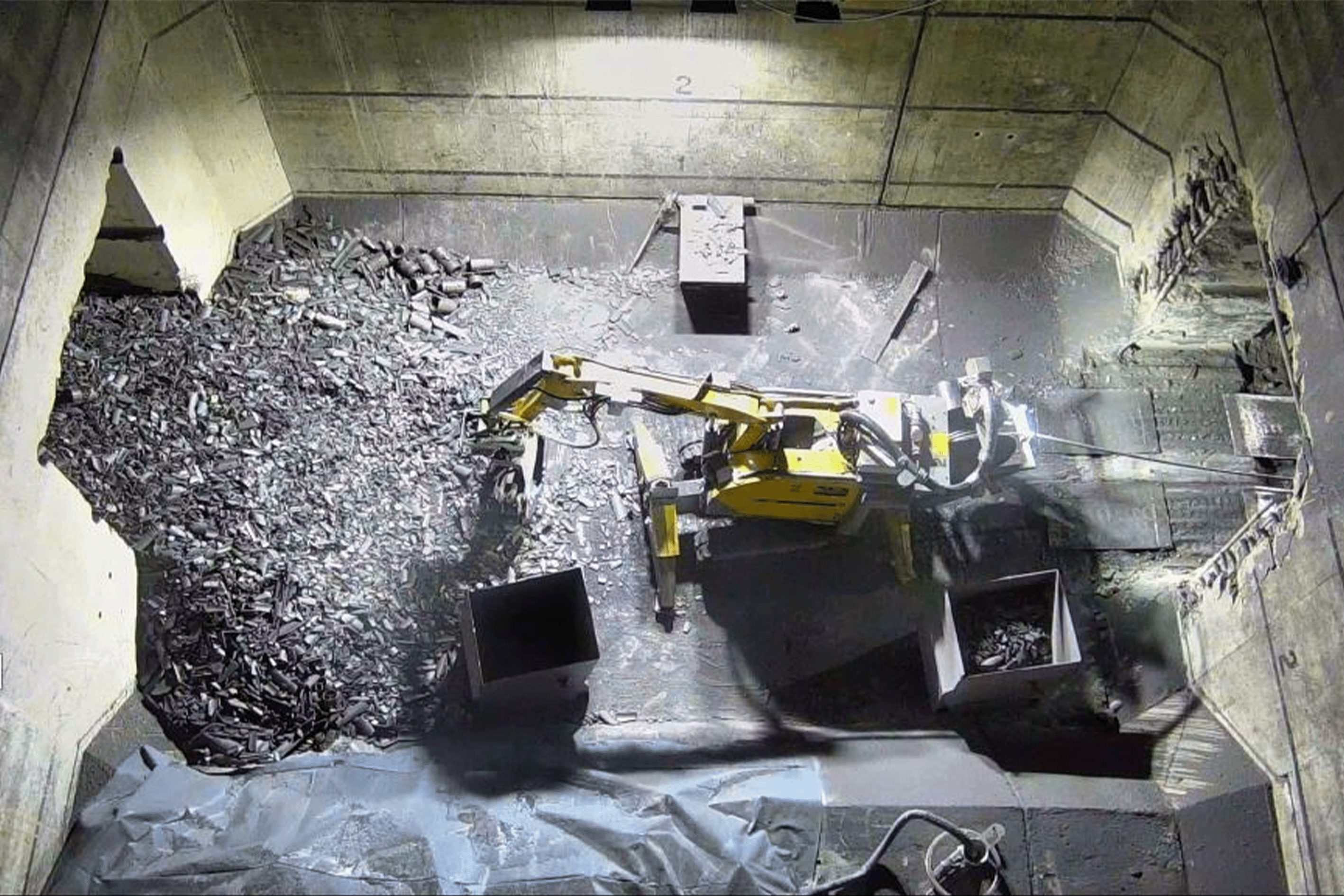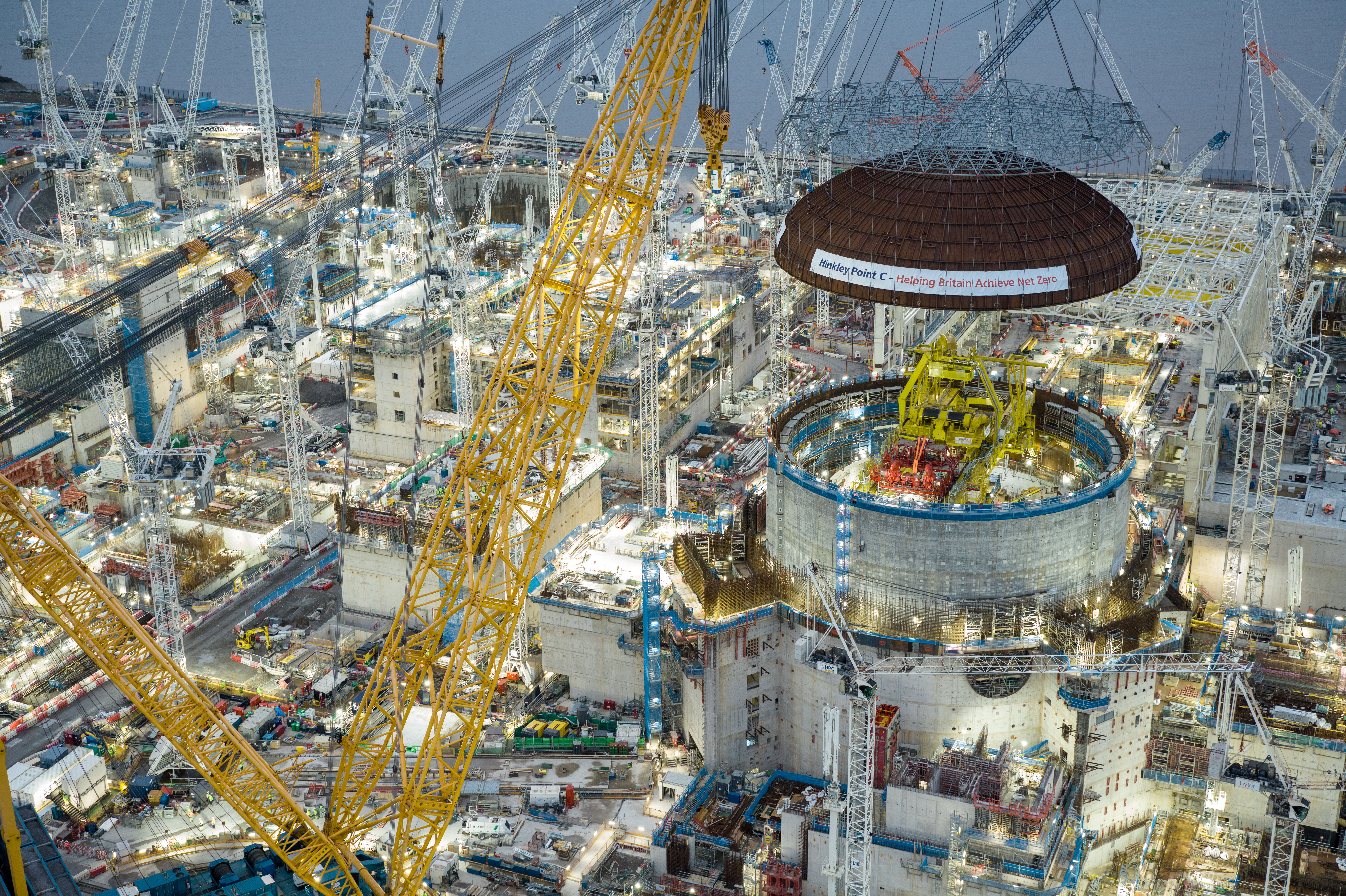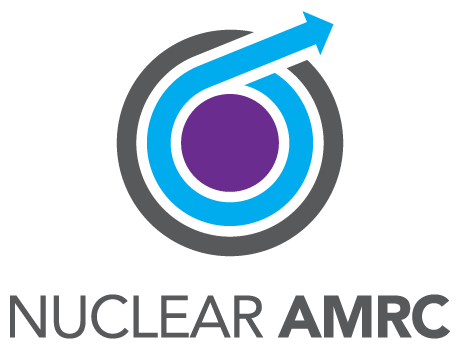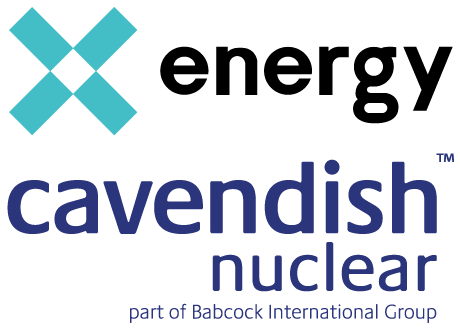The Nuclear Industry Association (NIA) welcomes the opportunity to respond to the Decarbonisation of the power sector inquiry by the Business, Energy & Industrial Strategy Committee.
The NIA is the trade association and representative body for the civil nuclear industry in the UK. We represent around 250 companies operating across all aspects of the nuclear fuel cycle, including the current and prospective operators of nuclear power stations, international designers, and vendors of nuclear power stations, and those engaged in decommissioning, waste management and nuclear liabilities management. Members also include nuclear equipment suppliers, engineering and construction firms, nuclear research organisations, and legal, financial and consultancy companies.
Our members may choose to make their own, detailed response to this consultation. The focus of this submission is therefore on high-level, industry-wide matters.
Nuclear power is an essential part of the energy mix, and is the only proven source of clean, reliable and sovereign power. It has the lowest lifetime carbon emissions of any technology, and has the least land, mineral, metal and material requirements of any other clean energy source.
Delivering on the Government’s current nuclear ambitions requires not only learning from the hard lessons of the past of not deploying a fleet of Sizewell B replicas in the 1980s and 90s, but also making swift progress on the financing arrangements of future nuclear projects. Not doing so would risk losing supply chain capability and missing out on tens of billions of pounds of export opportunities.
While this inquiry is focussed on decarbonising the power sector, it is worth noting that nuclear energy has a potentially significant role to play in the production of clean hydrogen, decarbonising heavy industry, and the production of synthetic drop-in fuels for the likes of aviation and heavy transport, and much more.
Is the proposed future electricity mix, as announced in the Energy Security Strategy, the most efficient and cost-effective way to deliver power sector decarbonisation by 2035? Are there any further policy details and/or legislation required by the end of this Parliament to achieve these goals?
In the Government’s Energy Security Strategy released in April of this year, the Government laid out new targets for nuclear power in decarbonising the power, which included:
Increasing its plans for deployment of civil nuclear to up to 24GW by 2050 – up to 25% of the UK’s projected electricity demand
Intention to take one project to FID this Parliament (likely Sizewell C) and 2 projects to FID in the next Parliament, including SMRs. This is not a cap and the Government have said they would consider more, dependent on industry interest
That’s potentially 8 more reactors across the next series of projects, to deliver the equivalent of 1 reactor a year, rather than 1 a decade
The launch of the £120 million Future Nuclear Enabling Fund in May 2022, which aims to help mature potential nuclear projects ahead of any government process to select the next nuclear projects
Establishment of the Great British Nuclear Vehicle this year, tasked with helping projects through every stage of the development process and developing a resilient pipeline of new builds
We believe that nuclear power has an integral role to play in Net Zero by 2050. The Climate Change Committee (CCC) has estimated that the UK needs to quadruple its electricity supply by 2050, leaving a significant gap that needs to be filled by clean and low-carbon power if we are to meet these needs while simultaneously building an energy system that we get us to Net Zero
The CCC has also stated that 38% of electricity in 2050 should come from ‘firm’ sources, of which nuclear is the only proven low-carbon option at scale. Nuclear power is currently the only ‘firm’ commercially available, low-carbon technology on the market.
Nuclear is already essential to the UK’s decarbonised electricity mix, currently supplying 20% of electricity demand and nearly a half of our low-carbon electricity, although this will drop to under 4GW by 2025 due to the retirement of all but one of our current fleet; the same fleet which has saved more than 1bn tonnes of carbon emissions over its lifetime.
A recent report by EDF Energy also showed that emissions from generating electricity are likely to be around 5.5g CO2e eq/kWh for both Hinkley Point C and Sizewell C, in line with UNECE findings, which means nuclear energy has the lowest lifecycle carbon intensity of any electricity source.
Our own analysis has also found that if the UK committed to building two large scale nuclear stations at Wylfa and Sizewell, along with a fleet of Small Modular Reactors, it could replace more than 10bn cubic metres of gas imports.
While the NIA welcomed the announcement of 24GW by 2050, in our Forty by 50 report – published in 2020 – we stated our belief that the nuclear sector could contribute 40GW of power by 2050, which includes 240TWh of electricity, 75TWh of hydrogen and 100TWh of district heat.
Meeting this target would, on average, avoid 186.75m tonnes of CO2 a year (equivalent to the annual emissions of 48 coalfired power plants), create an additional 300,000 jobs, and contribute £33bn annual GVA – greater than the entire electricity and gas industry today.
It should also be noted that the Government’s own modelling for the Energy White Paper and Net Zero Strategy state that around 30GW of installed nuclear capacity will be required to decarbonise the UK’s electricity by 2050.
With this in mind, we believe the Government should remain open to the possibility to new nuclear beyond 24GW given its essential role in decarbonising the power sector.
To make this happen, the policies and/or changes, which we will detail in later answers, the nuclear industry would like to see before the end of this Parliament are:
- Establish and provide more detail on the work of Great British Nuclear as a vehicle to support new nuclear projects
- Designate Sizewell C to receive funding under the Regulated Asset Base (RAB) model so it can reach a Final Investment Decision (FID) by Q4 2022 or Q1 2023
- Significantly advance a further large-scale nuclear project to FID by 2024
- Launch a siting process for new nuclear sites to host Advanced Nuclear Technologies, beyond the current eight designated available sites
- Ensure nuclears inclusion as a sustainable technology in the UK Taxonomy
We will discuss these recommendations in more detail in other answers within this response.
What are the key challenges faced by each generation technology regarding both their deployment and scaling up within the current policy framework? What can be done to overcome these challenges? What generation capacity is required and what role will each technology play?
Multiple technology vendors estimate that, if enabled in a timely manner and having the correct policies in place, SMRs could contribute to the Government’s new 2030 target of eight new nuclear projects. However, all levers must be exercised in parallel for this happen.
We understand that a new National Policy Statement (NPS) for nuclear electricity generation infrastructure deployable after 2025 will be developed to reflect the changing technology landscape for nuclear and that the Government envisages consulting on a siting approach for new nuclear developments.
This new National Policy Statement (NPS) for nuclear power should be published to include Generation III+ reactors and beyond. The NPS should tackle a new siting process for SMRs – either through authorising more nuclear licensed sites or approval of unused brownfield sites to hold SMRs without special categorisation.
Furthermore, HMG should look to release existing nuclear sites as a matter of urgency, such as those under the Nuclear Decommissioning Authority’s (NDA) stewardship, for the development of Advanced Nuclear Technologies. This can be done in two ways: through negotiations with a current nuclear site owner or with the NDA to obtain an appropriate site for deployment.
Last year, BEIS announced that the Generic Design Assessment (GDA) would be opened to advanced nuclear technologies. Two SMR vendors are now at various stages of this process, namely Rolls-Royce SMR and Last Energy.
Applications for the £120m Future Nuclear Enabling Fund (FNEF) must also be opened the industry – large-scale and SMR bids – as soon as possible, and following assessment from Government, successful projects must receive funding by the end of 2022 or, at the very latest, Q1 2023 to have the desired impact.
It is imperative these steps are taken by Government at pace and in parallel, not succession. Progress must be made on these barriers within the year to both meet the Government’s own targets, and to avoid falling behind our international competitors, several of whom are already ahead of us.
As the trade association of the UK nuclear industry, we do not have a public stance on the number of each type of reactor (large-scale, SMR and AMR) needed to reach 24GW by 2050, but we do work closely with Government on establishing which projects are most viable within certain timescales. We will continue this work and discussions with Great British Nuclear.
What key milestones and indicators are needed to scrutinise and measure progress in delivering the UK’s power sector targets?
Given the Government’s new target of eight new reactors by 2030, the announced intention to establish GBN vehicle to delivery new nuclear in the UK was welcomed by industry. The NIA believes it will play a pivotal role in providing the key milestones and indications of progress in achieving these ambitions.
Key to this will be the first 100 days of GBN, leading to a projected preliminary report to be published in September 2022. We believe that workstreams have been established through consultation with industry that will have their own targets, although these have not been made public yet as they are still in development. The NIA will remain in close communication with GBN and BEIS throughout this progress.
Due to this, in this submission we will therefore only be touching on what the NIA believes the priorities for this vehicle should be and wait with anticipation on the official details of the GBN in due course. These priorities are:
Finance
Trust and confidence in nuclear power is lacking throughout the finance community, despite growing interest from a number of key stakeholders. Progress on establishing the RAB model as a mechanism to finance new nuclear has certainly added to this confidence, both nationally and internationally.
As we go greener and the world moves towards Net Zero, the finance sector is looking to Governments for assurance on which low-carbon technologies are a safe investment for them. Therefore, the inclusion of nuclear power in the UK taxonomy would be a significant indication that nuclear power was a good investment, and without investment, these projects cannot be built, and the UK will not hit its decarbonisation goals.
GBN should also consult with financial institutions on how to enable the effective sale of green bonds including nuclear, which happened last year in Canada, so that the Government can announce that the next issue of green bond will include nuclear within that 100-days timeframe.
It is also important to note that projects financed under green bonds can be done so at a slightly lower yield than standard debt. While this may not seem significant, for nuclear projects a 1% reduction in the weighted average cost of capital (WACC) can equate to £8-9/MWh off the strike price.
Accelerating delivery of projects
Working on the projected speed and delivery of projects will require extensive consultation with companies looking to build both GW-scale and advanced nuclear technologies in the UK within the next decade. In these conversations, GBN needs to identify how delivery through to full operation could be accelerated.
It should assemble a list of comparator project delivery models and key individuals who understand what worked, and why, to each draw on how delivery timescales of nuclear can be improved. Comparator projects could include high speed rail, submarines, and carriers, to name a few, and their lead personnel should be sought out.
Permitting and Regulation
Regulation and safety are at the heart of the nuclear sector. However, the current system cannot work efficiently or quickly enough to deliver on Government targets. Therefore, without compromising on current standards, the current permitting regime should look for ways to accelerate the timeframes of decisions need to approve nuclear projects.
This should be an early priority for GBN to commission and is particularly important to the deployment of advanced nuclear technologies, as previously discussed in this submission.
As part of this process, it is of critical importance to identify all of the pre-FID steps and assess how many of them could be run in parallel rather than in series and the capacity requirements in agencies and bodies to facilitate that greater urgency of approach. We understand resource will be a significant issue for the Government and therefore should be rectified as soon as possible.
In line with current work of global harmonisation of regulation practices, the UK should incorporate the work that has been done by the ONR with equivalent regulators in Canada and the US, and draw on the progress of initiatives being led by the IAEA to avoid duplication of regulatory processes for a particular reactor design. This is a further area where the UK has a chance to take the lead internationally.
This work should also look at how the benefits of nuclear power can be shared with local communities and sites – as was previously done by the Government during the 2007 siting process – and in line with approaches under discussion for renewable developments.
Siting
GBN should undertake a rapid high-spot study on potential GW-scale and SMR sites in England and Wales, involving those who had been part of the previous siting process. We know this can be done, following the successful process run by the UK Atomic Energy Authority (UKAEA) in their bid to find a home for its Spherical Tokamak for Energy Production (STEP).
The need for more sites should guide that quick review and subsequently help identify sites suitable for large or small scale development, or potentially both co-developed alongside each other.
Supply chain and skills
There has been a lot of work previously undertaken in this area – both in mapping current skills capacity and demand, and in identifying areas throughout the fuel cycle where the supply chain is able to make a meaningful contribution. This includes the NIA’s 2012 Capability Report.
It is important that this exercise does not exclude the significant fuel capability the UK currently has, which is an important aspect of energy security. Utilising readily available information will assist in GBN producing a rapid assessment of where capability and capacity shortcomings can be addressed, and with intervention, can maximise domestic content on the accelerated scale of deployment that is being sought. Repurposing of the work that is co-ordinated by various cross-sector bodies, and actions undertaken by the previous Nuclear Sector Deal PMO, to support GBN will provide a coherence and consistency currently often lacking.
The export potential of UK technology, and UK supply chain capability, should be an integral part of GBN’s remit, as it was when the Nuclear Sector Deal was published in 2018. Exports are a key driver for innovation in our sector and signal to investors major opportunities in the UK economy.
Governance and Industry engagement
There are a number of cross-industry groupings and initiatives in place – all of which should be tasked with providing support to, and a route of interaction between GBN and industry, and as appropriate with government more widely.
To execute its work effectively in its first 100 days, GBN should look to at these initiatives to make sure that its work is not duplicated and time is wasted. For example, the Nuclear Sector Deal has a Project Management Office in place, which should also be repurposed to help drive industry co-ordination of activity in support of GBN’s mission. There are other groups – including on skills, for example – where similar rationalisation could provide a greater degree of clarity and coherence across the sector.
Does the Government’s strategy incentivise investment that enables decarbonisation of the power sector by 2035? Do current financing mechanisms allow for the required investment?
As referred to in our answers in the above questions, to decarbonise the power sector by 2035, it is imperative that progress is made for Sizewell C to meet Final Investment Decision (FID) by the end of 2022 to capitalise on the current nuclear supply chain, and enable the smooth transfer of the workforce from Hinkley Point C to Suffolk.
The successful progression of the Nuclear Energy (Financing) Act through Parliament was essential to establish the Regulated Asset Base (RAB) model, which could enable the low-cost financing of projects such as Sizewell C, and beyond. RAB financing would save consumers around £30bn on bills over the lifetime of each project, around £10 per year off the typical bill, according to official BEIS estimates. This is compared to the Contract for Difference (CfD) mechanism used for Hinkley Point C.
A large-scale nuclear project financed using a RAB would add a small levy to bills during construction. This income would allow project developers to finance the project at cheaper rates, which would substantially cut the ultimate cost to consumers of the electricity it produces.
Reaching FID for Sizewell C would also reduce the agreed CfD for Hinkley Point C to £89.50/MWh. As Sizewell C will be a replication of Hinkley Point C, there will be a significant reduction in the cost of construction, as seen in most types of infrastructure projects which fleet build.
Following the publication of the draft reasons for Sizewell C to receive funding through the RAB model, the NIA will work with the sector on drafting an industry position in response to the BEIS consultation on how the RAB model will work.
While recent progress is incredibly welcome, timing remains critical and Government must remain focussed if Sizewell C is to reach FID by the end of 2022 and contribute to the Government’s ambition of eight new nuclear reactors by 2030.
For next generation reactors, costs will be reduced due to their modularity and ability to be built on construction lines in factories. Their designs have simpler, shorter construction programmes, and combined with opportunities for co-location with other facilities, will be lower in both cost and risk.
As a result, Advanced Nuclear Technology developers are looking at both the RAB and CfD to finance their projects. The Government should continue to work with industry on developing its approach to financing advanced reactors, including providing clarity on the steps developers need to take to qualify for the commence CfD negotiations with Government. This action should be done alongside the work on siting and GDA requirements for the deployment of SMRs.
Taxonomy and Green Financing Framework
We also hope the UK’s upcoming Taxonomy will help provide a level playing field for investment for low carbon technologies.
The NIA welcomes the Government’s intention to consult on the criteria for nuclear power to be included in the UK Taxonomy, and the formation of the Energy Working Group to look at the role of nuclear power. We believe it is clear that nuclear technologies can make a substantial contribution to the Taxonomy’s objective of climate change mitigation, and these actions are a move in the right direction.
We should note that significant research on nuclear’s characteristics has already been undertaken by the EU in the drafting of its own Taxonomy. The EU commissioned an exhaustive Joint Research Centre (JRC) report which found there was no scientific basis to treat nuclear differently from other sustainable technologies.
It has since been announced that the EU will include nuclear in its Taxonomy on a series of conditions, such as plans for the disposal of nuclear waste and the use of accident-tolerant fuel. The UK must avoid the mistakes of the EU, which wasted years, money, and resource in a political effort to deny nuclear a sustainable classification, despite the science.
As a world-leader in climate change mitigation and environmental finance, the UK can make decisions that have international ramifications. If nuclear were to be excluded from the UK Taxonomy it would make it incredibly challenging to mobilise the required investment and make our path to Net Zero by 2050 far more uncertain.
In June 2021, HMT Treasury published the Green Financing Framework which set out how the UK Government will finance expenditures related to tackling climate change through the issuance of green gilts and Green Savings Bonds via NS&I. The Framework is intended to be aligned to the upcoming UK Taxonomy.
Nuclear power was specifically excluded from the Framework, with HMT stating that in consideration of the ‘many sustainable investors [that] have exclusionary criteria in place around nuclear energy, the UK Government will not finance any nuclear energy-related expenditures under the Framework’.
This is in direct contract to the position taken by several investment banks, including the Bank of Montreal, which supported the successful issuance of CAD$500 million in green bonds for the refurbishment of nuclear reactors in Ontario. The issuance was six-times oversubscribed.
In consequent answers to numerous Parliamentary Questions, Economic Secretary John Glen said that the Framework followed current international market standards for sovereign green bonds and does not wholly represent what the Government considers to be ‘green’. Government has reiterated its stance that nuclear power has an important part to play in Net Zero by 2050 and financing for the technology will be considered as part of its development of the UK Taxonomy.
The Framework will be reviewed on a regular basis, so there may be a time when nuclear is included in the future. While the Framework will not prevent private investors from investing in nuclear, its exclusion has sent a signal to the finance community that the Government does not see nuclear power as ‘green’ enough
This must be rectified through nuclear’s inclusion in the UK Taxonomy if Government want to show they are confident in nuclear power’s role in getting to net zero. The positive recognition of nuclear in the Taxonomy would attract investors to nuclear.
To stimulate investment in nuclear, the Government should therefore:
- Pursue a level playing field for all low-carbon technologies in the drafting of its UK Taxonomy
- Urgently review the exclusion of nuclear from the Green Financing Framework
The key to securing investment in reliable and affordable low-carbon energy ultimately depends on clear Government direction and publicly communicated confidence in a technology and/or sector to deliver.
Earlier this year, French President Emmanuel Macron announced that France would build fourteen new reactors by 2050 as part of its bid to hit Net Zero. He also committed €1bn to France’s SMR project. Together, the programme will deliver 25GW of new nuclear capacity. In a clear commitment to nuclear, he said: “What our country needs […] is the rebirth of France’s nuclear industry.”
South Korea has openly admitted that its turnaround on nuclear power – having previously wanted to reduce its nuclear output from 25% to 10% in favour of importing energy from China and Russia – was heavily influenced by France’s confidence in nuclear power through its new nuclear construction programme and target.
The UK Government should aim to replicate France’s strong communication to the world that the UK is also open and ready for investment into our sector through a strong commitment to multiple projects, such as Sizewell C, Rolls-Royce SMR, and beyond. Taking a one-by-one approach is not enough to provide the security the UK needs.
This message can then be underpinned by the recommendations on funding regulation that we have outlined in this response to enable investment.











